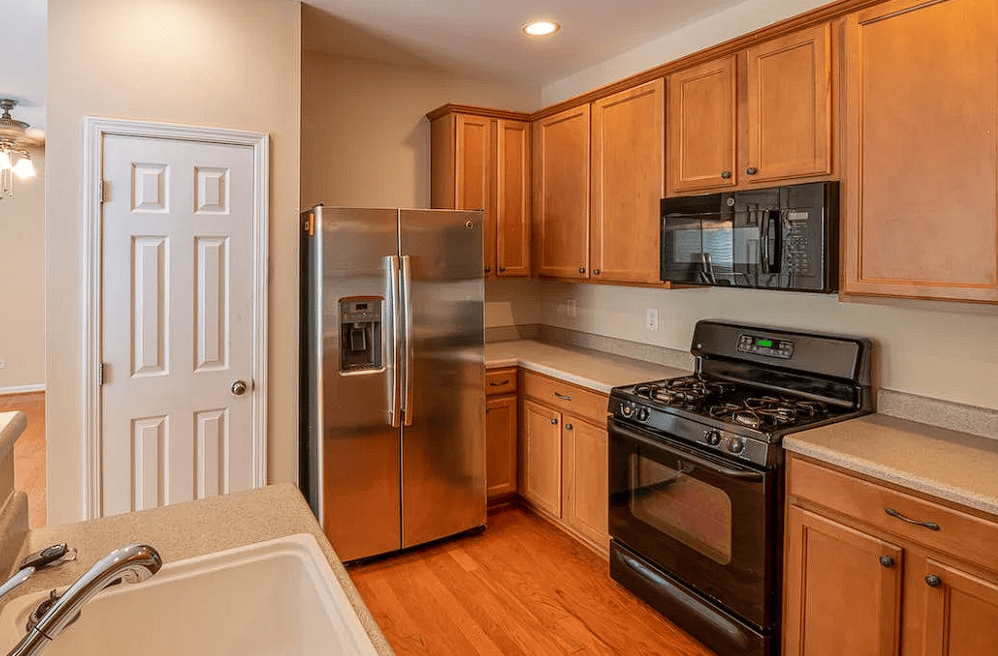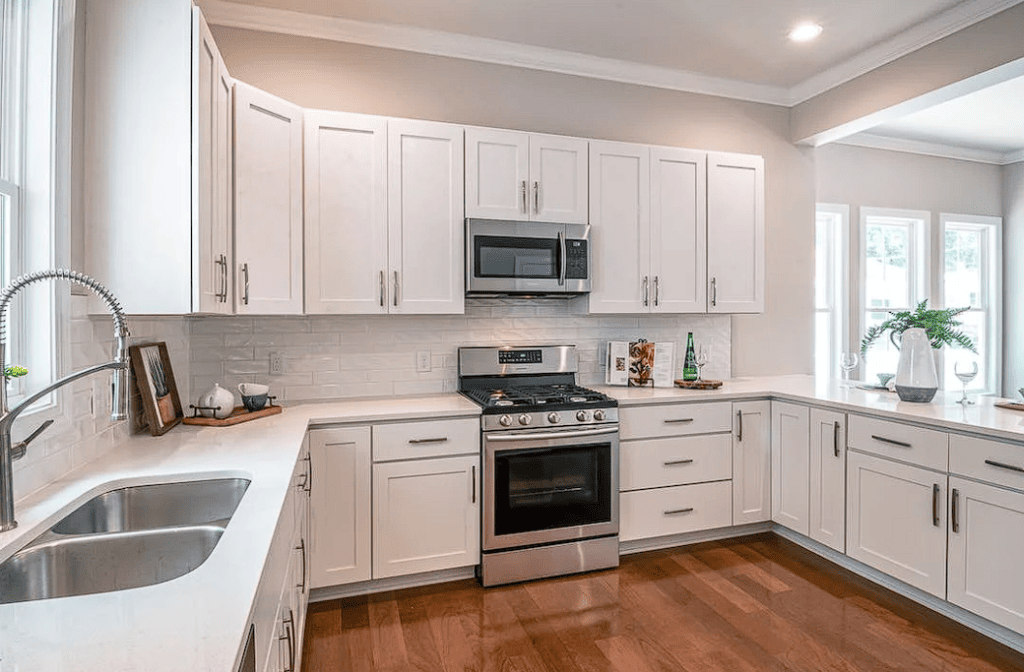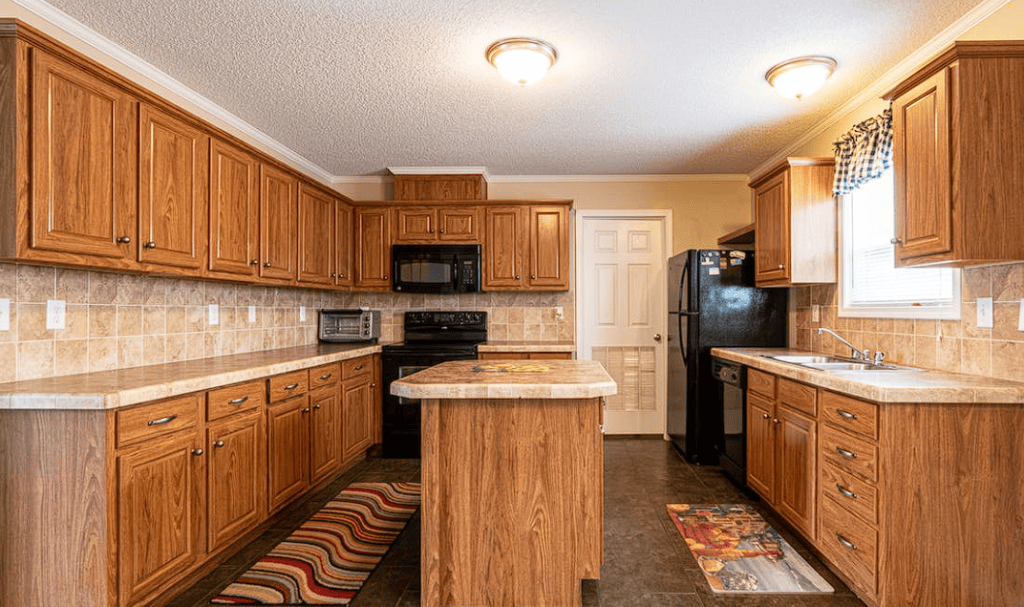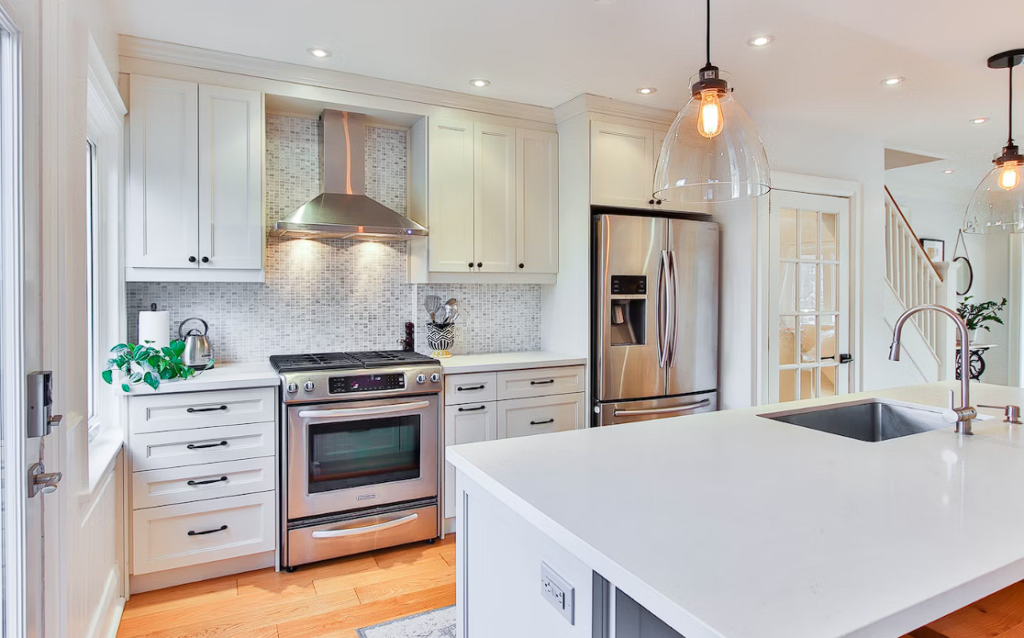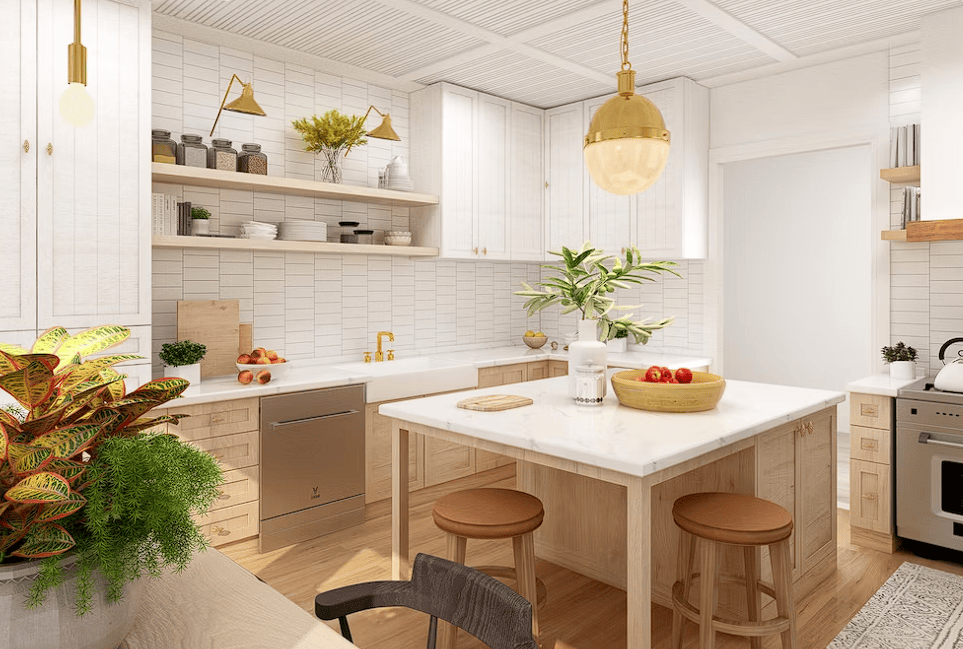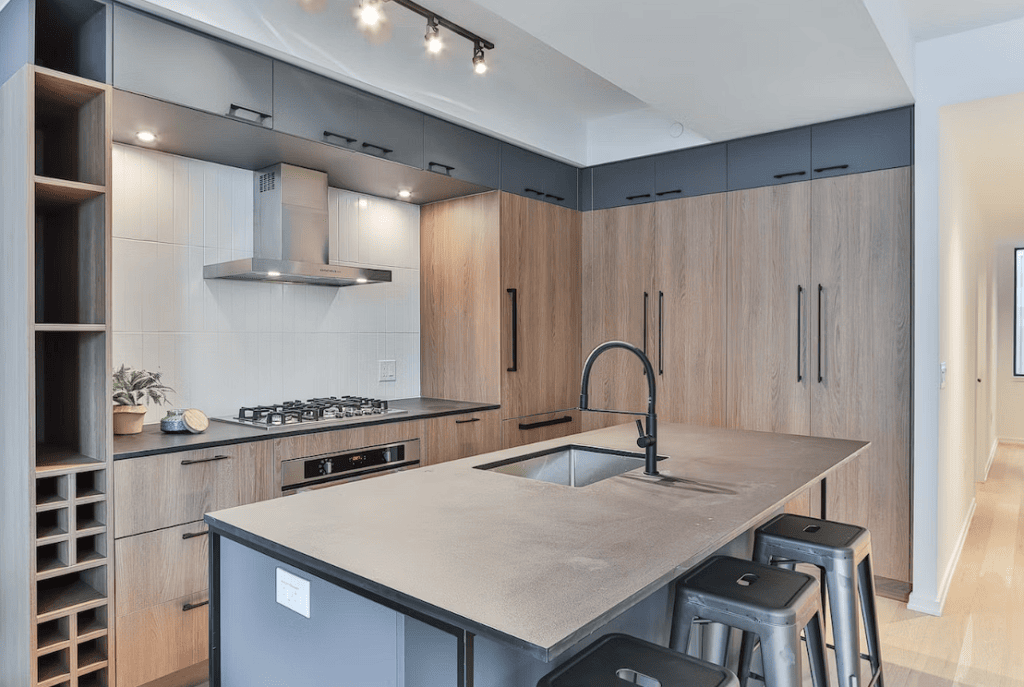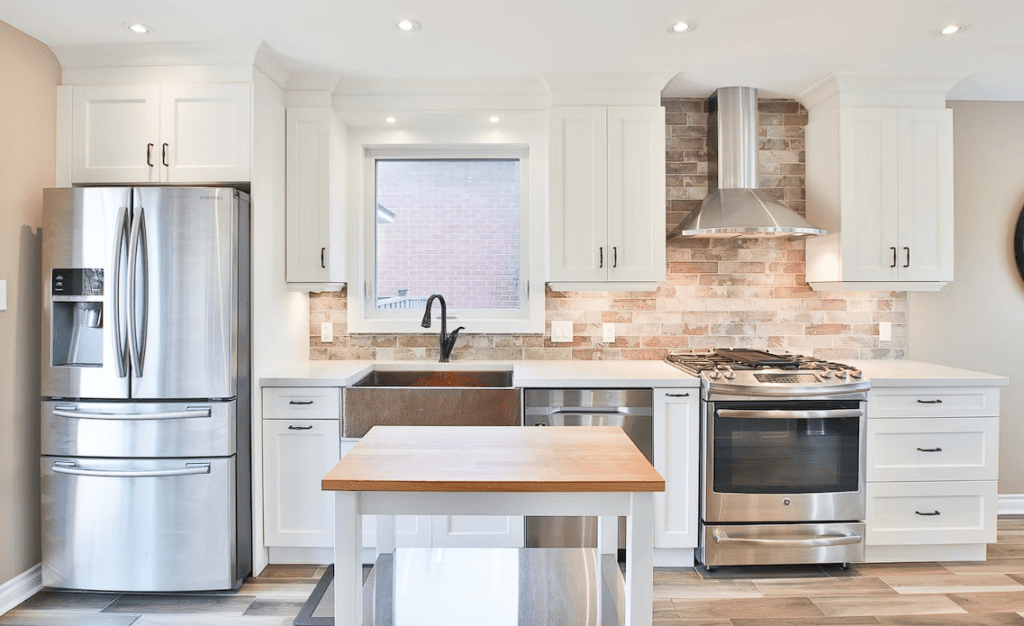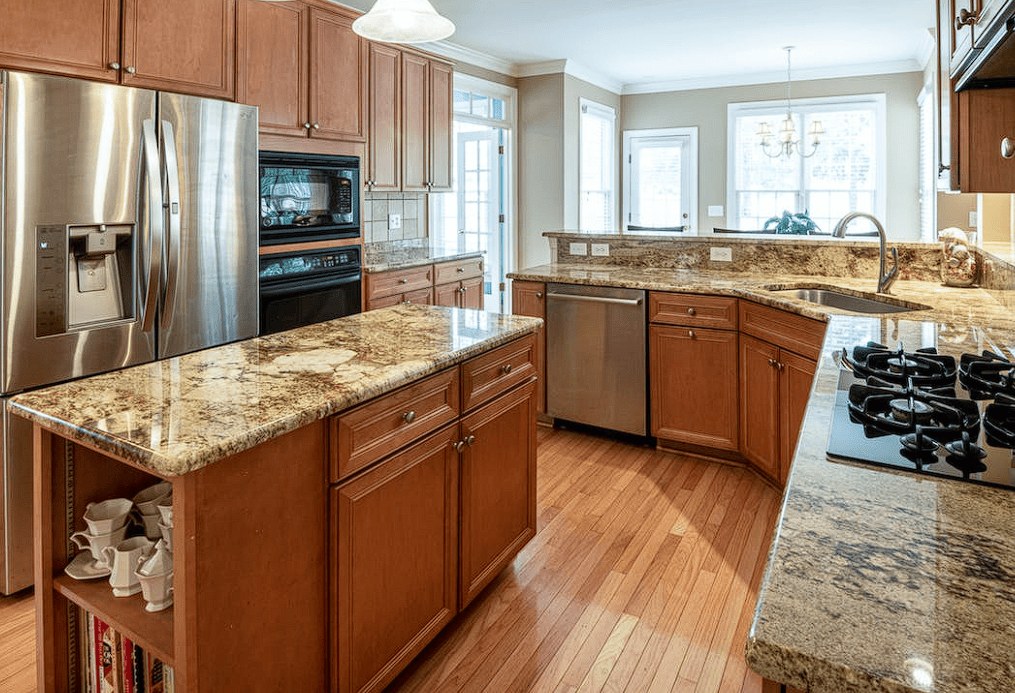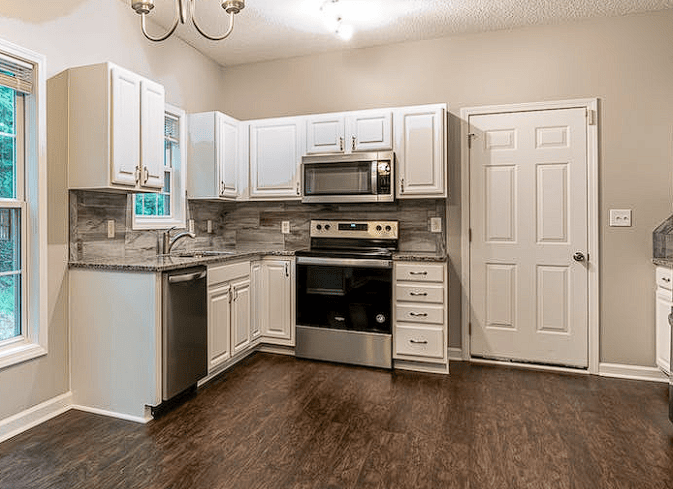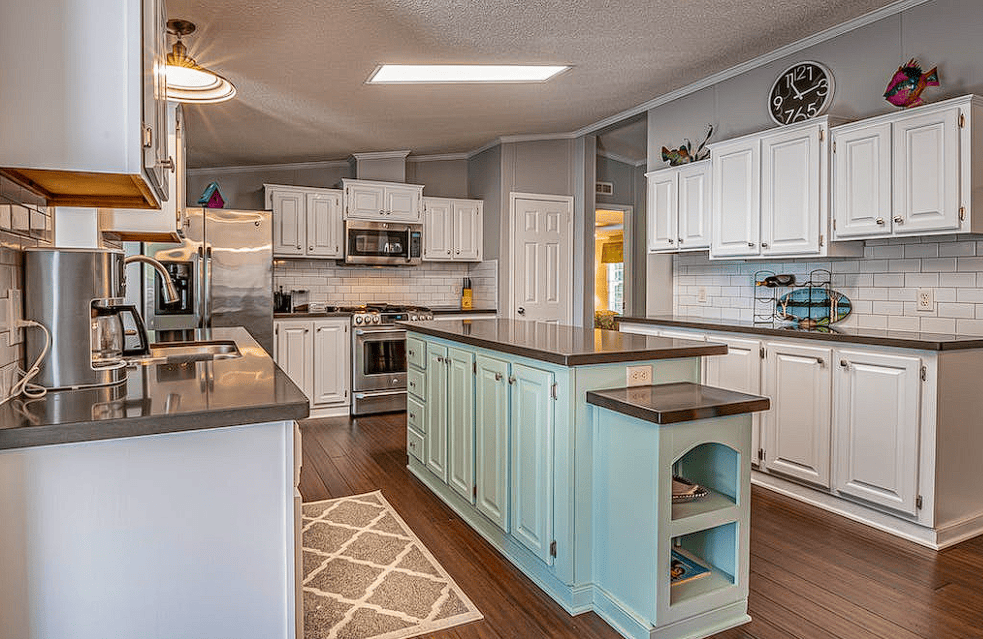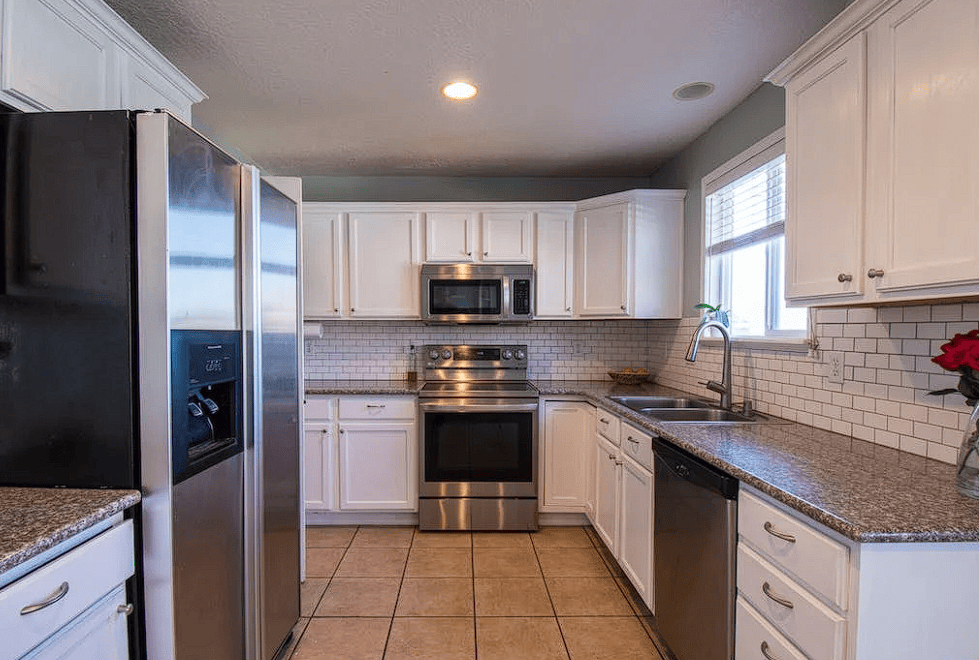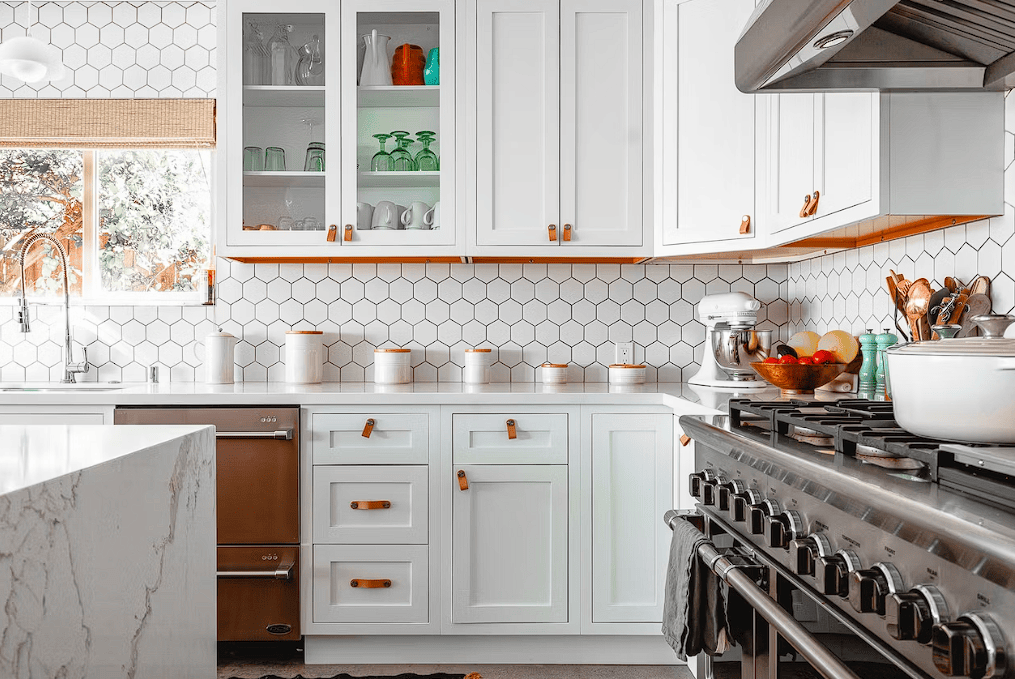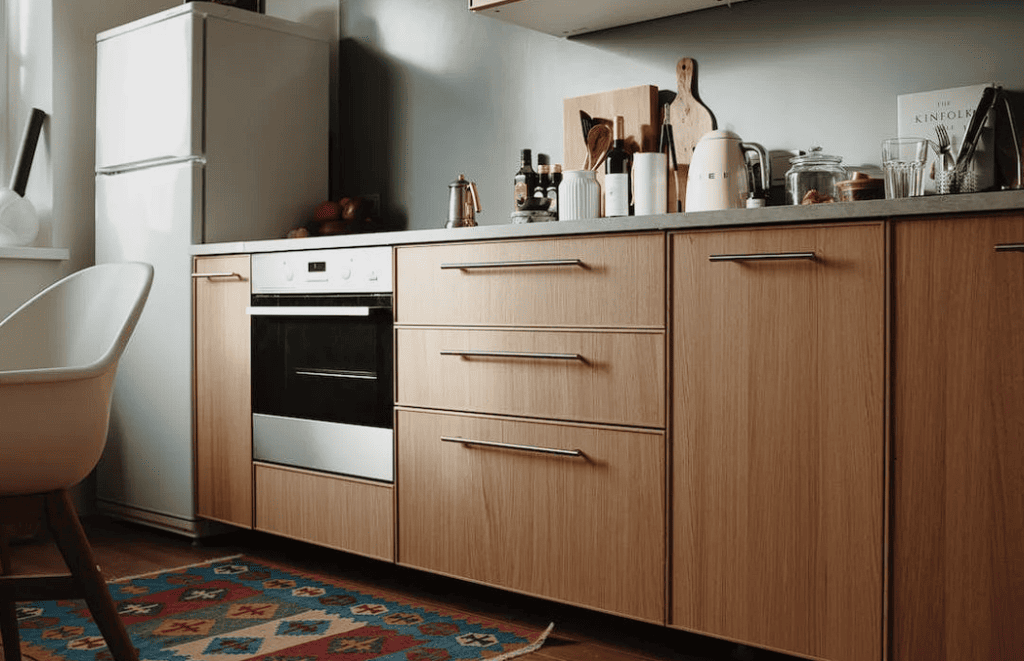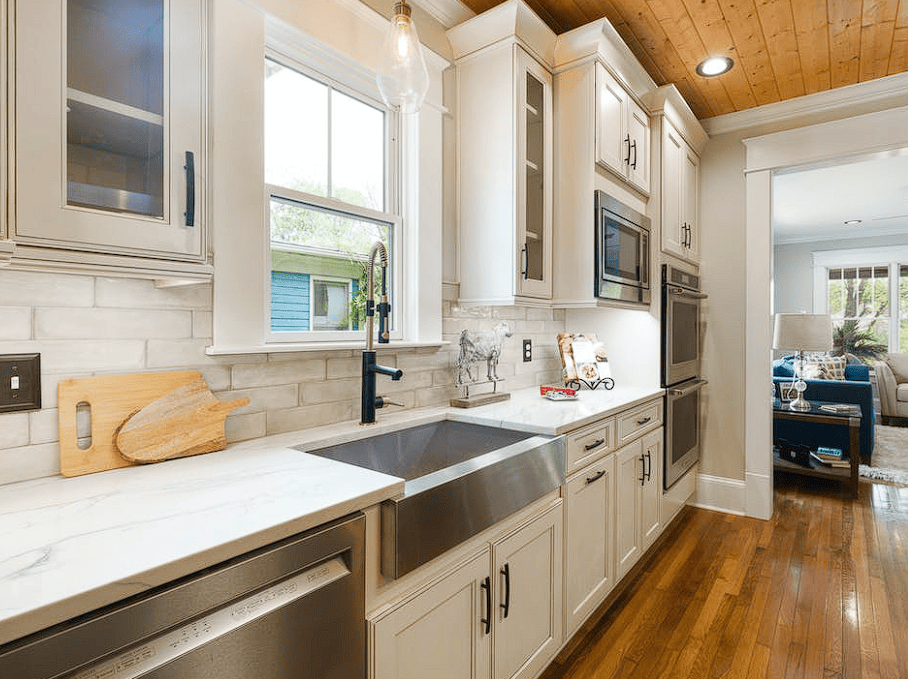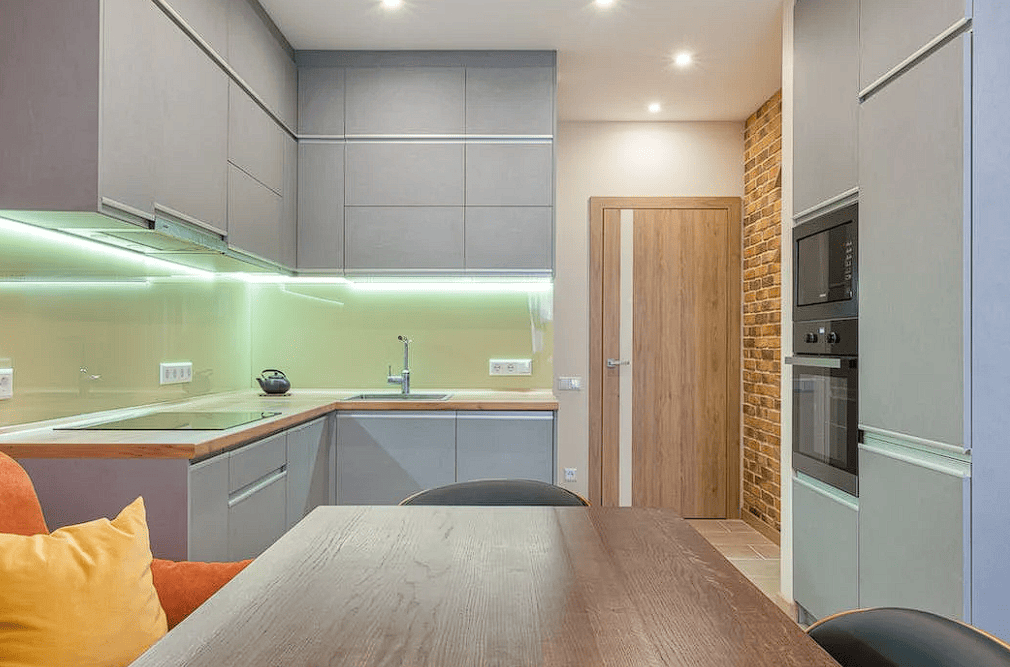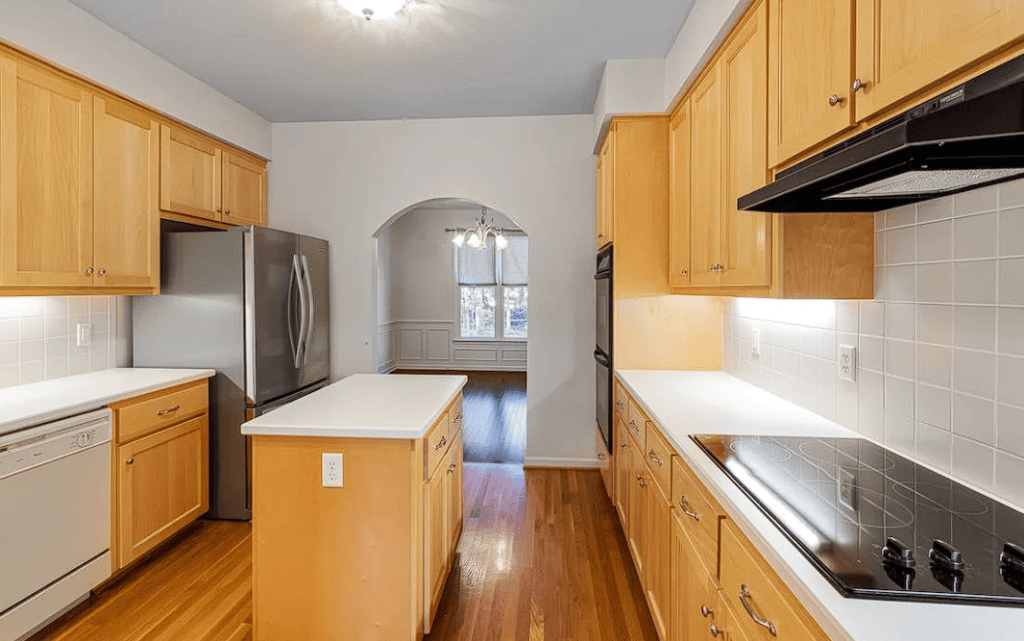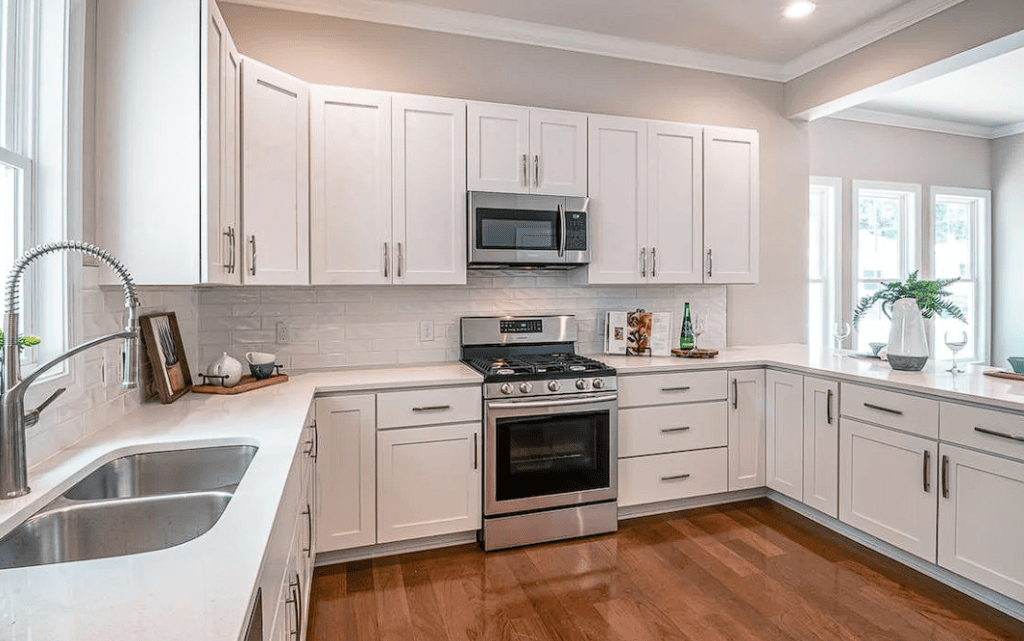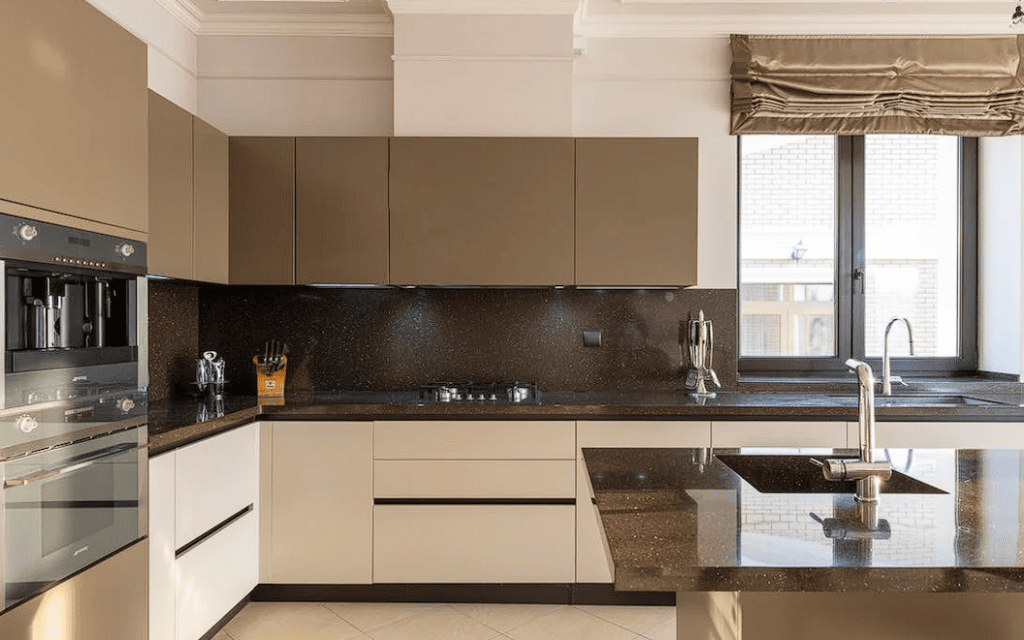Whether you live in a studio apartment or a mansion, a quality kitchen is a must. Kitchens benefit greatly from well-constructed storage and display cabinets. You can install as many or as few cabinets as you like in your kitchen depending on your needs and the layout. However, there are a few necessities that can transform even the simplest kitchen into a workable space. Storage and accessory units for cabinets, such as corner cabinets and spice pull-outs, can make a huge difference.
It's important to do your homework and talk to your designer and cabinet supplier about your specific needs before tearing out your old cabinetry.
Why Cabinets Are Important To The Design Of A Kitchen
Organization and Storage
While this may seem like an obvious use for cabinets, another great benefit is the extra storage space they provide. They are usually mounted on walls and not used on their own, making the most of under-counter and over-the-range areas. This results in an abundance of space that is far from cramped.
Seasoning, cutlery, crockery, jars, and other non-perishables can be stored conveniently in cabinets with multiple shelves. Storage and Arrangement Drawers are an optional addition to cabinets that provide even more storage. How you tailor and organise them is key. To minimise clutter and maximise efficiency, install some cabinets in your kitchen.
Aesthetics
The appearance of your kitchen can be revolutionised by our custom kitchen cabinets or ones like them. Cabinet veneers and new cabinet doors can make a dramatic improvement even if you're not doing any major remodelling. To achieve a chic, contemporary look with minimal effort, just swap out your old, creaky wooden cabinet doors for sleek metal ones.
Because of their importance, kitchen cabinets should be prioritised during any renovation project. Invest in a high-quality cabinet on the inside and out. Examine your options, even if they are limited to the purchase of custom veneers and separating panels.
Quality
The durability of your cabinets is directly related to their build quality. Remember that renovation and replacement are not like buying a pair of cheap shoes, and resist the urge to save money by cutting corners. Shoes can be worn a few times before being broken and thrown away, but kitchen cabinets are meant to be used repeatedly over many years. Avoid the temptation to settle for a quick fix when it comes to design.
Can You Have Too Many Kitchen Cabinets?
One can have an excessive amount of kitchen storage.
It's possible to defeat the purpose of having kitchen cabinets altogether by installing too many of them.
In addition, if your kitchen is already tight for space, adding more cabinets won't help. If there is room, a kitchen island is a great addition to any kitchen, as is plenty of counter space for prepping meals.
Adding cabinets to your kitchen is a great way to increase storage space, but it's even better if those cabinets can serve multiple purposes. You can make the most of your meagre storage space by putting a stool under the counter.
It is possible to increase storage space in a room without increasing the number of cabinets by installing open shelves or shelving inserts inside the existing cabinets. Keep in mind that the purpose of your kitchen cabinets is to improve the room's aesthetics, not to dominate it.
Should All Cabinets Be The Same Throughout The House?
To put it simply, no. Harmony of form and visual harmony can be achieved by using a range of cabinet styles throughout a residence. Open shelving or a lighter kind of cabinets can be developed for the living room to highlight the room's atmosphere, while kitchen cabinets can be built to store objects and accommodate appliances.
With some creativity, cabinets can be used to create striking visual contrasts in any room of the house. Cabinets, besides serving their intended purpose, should provide useful storage space wherever they are installed.
Taking this into account will help you choose the best cabinet style for each room, guaranteeing that the decor will reflect your personal tastes while also meeting the room's functional requirements.
The Old Fashioned Equation
In the 1930s, when the economy slowly began to revive and more people began building homes again, an attempt was made to develop a scientific approach for measuring kitchen cabinet suitability.
The prevailing paradigm at the time held that the equation functioned on a "Occupants + 2" basis. Every occupied bedroom in the house, plus two occasional overnight guests, would require an extra 6 square feet of kitchen storage space.
Six square feet of kitchen space for storage may seem like a lot for a single person to need, but that's just an extreme case. Kitchen storage area of 24 square feet is needed for a household with four members plus two visitors. This approach was designed primarily to meet the storage and cooking requirements of such a large family.
How To Estimate Kitchen Storage Needs
Understanding your storage habits is the first step in estimating your storage requirements. The kitchen has ceased to be a separate area for many modern households. These days, it's not uncommon for the kitchen to serve as a multi-purpose room, hosting everything from meals to homework sessions. In some families, the kitchen serves as the central gathering space for visiting friends and relatives. These days, most families tend to gather in the kitchen to do their favourite things.
What kind of storage space is needed or desired is the second step in estimating kitchen storage needs. It makes sense to keep dinnerware close to the table if the family plans to spend most of their mealtimes in the enlarged kitchen. A dishwasher could be useful there as well. A desk, bookshelves and internet access might be required for a potential office space (where kids can do their homework, where parents can pay bills, etc.).
The third action is to decide what kinds of kitchen storage will be needed. Do you want cabinets with glass doors for showing off your fine china, glasses, and food storage containers? Where will you put temporary-use appliances? Is it your goal to design your kitchen around your preferred method of cooking and other food prep tasks? If you have kids, you might want to keep cold drinks and microwaveable snacks (popcorn, for instance) in an easily accessible area of the house.
The fourth step is to take stock of your current storage options. There is a straightforward calculation for this. Take accurate measurements of the available storage space in your kitchen, including the width and depth of your cabinets, as well as the number of shelves and drawers in each one.
Fifth, calculate how much extra room will be required, as well as how much of the existing room you would like to repurpose. A refrigerated drawer for beverages or a small under-counter refrigerator, for instance, could be useful if you intend to set up a snack area or zone. You may want a second oven and designated storage areas for ingredients, bakeware, etc., if you intend to dedicate a portion of your kitchen solely to baking. Make a decision as to the best location for storing frequently used items.
Can You Have Too Many Kitchen Cabinets?
Some kitchens may have more storage space than others. It's possible to defeat the purpose of having kitchen cabinets altogether by installing too many of them.
In addition, if your kitchen is already tight for space, adding more cabinets won't help. If there is room, a kitchen island is a great addition to any kitchen, as is plenty of counter space for prepping meals.
Adding cabinets to your kitchen is a great way to increase storage space, but it's even better if those cabinets can serve multiple purposes. You can make the most of your meagre storage space by putting a stool under the counter.
It is possible to increase storage space in a room without increasing the number of cabinets by installing open shelves or shelving inserts inside the existing cabinets. Keep in mind that the purpose of your kitchen cabinets is to improve the room's aesthetics, not to dominate it.
What's the Golden Ratio for Kitchen Cabinets?
Applying the golden ratio, an aesthetic element of design, to kitchen cabinetry can make the room look more put together and stylish. The golden ratio is a specific value that is about 1.
The number 618 is commonly known as "phi." Like how the length and width of a square are the same, this describes the relationship between the two sides of a rectangle. The golden ratio is widely used in design because it has been found to be aesthetically pleasing to the human eye.
Cabinetry is just one of many design disciplines that employs the golden ratio. When applying the golden ratio to kitchen cabinetry, the width to the height ratio should be close to 1.
618:1. The kitchen's cabinet doors, drawer fronts, and wall cupboards all feature this proportion. The golden ratio can help you design a kitchen that is beautiful and functional all at the same time.
Conclusion
The value of having sturdy cabinets for storing and displaying food is highlighted throughout the text. Extra storage is provided by cabinets, which are typically installed on walls to make the most of the space under countertops and above ovens. They can also completely change the look of the kitchen by installing new cabinet doors and veneers. They are designed to be used frequently over a long period of time, thus they should be given top priority during any renovation job. Finally, keep in mind that kitchen cabinets aren't like a cheap pair of shoes; they're an investment that will pay off over the course of many years.
Cabinets in the kitchen should complement the space rather than take it over. By adding open shelves or shelving inserts to existing cabinets, you can expand storage space without having to increase the number of cabinets. Combining different cabinet designs across a home creates a pleasing aesthetic. Cabinets are a great way to make sure a room looks and functions the way you want it to while also expressing your individuality via the design. In the 1930s, the Old Fashioned Equation was created to determine the optimal size of kitchen cabinets.
It was made to accommodate a family's need for plenty of space to store food and prepare meals. Knowing one's storage habits and deciding what kind of storage space is needed or desired might help when estimating kitchen storage demands. Last but not least, it's crucial to plan one's kitchen according to how one typically cooks and prepares meals. Determine how much extra space will be required and how much of the current space you would like to repurpose by taking stock of your existing storage alternatives. Consider installing an island in the kitchen or more counter space so that you have a dedicated work area for cooking.
Content Summary
- Whether you live in a studio apartment or a mansion, a quality kitchen is a must.
- Kitchens benefit greatly from well-constructed storage and display cabinets.
- You can install as many or as few cabinets as you like in your kitchen depending on your needs and the layout.
- Drawers are an optional addition to cabinets that provide even more storage.
- To minimise clutter and maximise efficiency, install some cabinets in your kitchen.
- Invest in a high-quality cabinet on the inside and out.
- The durability of your cabinets is directly related to their build quality.
- One can have an excessive amount of kitchen storage.
- It's possible to defeat the purpose of having kitchen cabinets altogether by installing too many of them.
- In addition, if your kitchen is already tight for space, adding more cabinets won't help.
- If there is room, a kitchen island is a great addition to any kitchen, as is plenty of counter space for prepping meals.
- Adding cabinets to your kitchen is a great way to increase storage space, but it's even better if those cabinets can serve multiple purposes.
- You can make the most of your meagre storage space by putting a stool under the counter.
- It is possible to increase storage space in a room without increasing the number of cabinets by installing open shelves or shelving inserts inside the existing cabinets.
- Keep in mind that the purpose of your kitchen cabinets is to improve the room's aesthetics, not to dominate it.
- Harmony of form and visual harmony can be achieved by using a range of cabinet styles throughout a residence.
- With some creativity, cabinets can be used to create striking visual contrasts in any room of the house.
- Cabinets, besides serving their intended purpose, should provide useful storage space wherever they are installed.
- Every occupied bedroom in the house, plus two occasional overnight guests, would require an extra 6 square feet of kitchen storage space.
- Six square feet of kitchen space for storage may seem like a lot for a single person to need, but that's just an extreme case.
- Kitchen storage area of 24 square feet is needed for a household with four members plus two visitors.
- Understanding your storage habits is the first step in estimating your storage requirements.
- These days, it's not uncommon for the kitchen to serve as a multi-purpose room, hosting everything from meals to homework sessions.
- What kind of storage space is needed or desired is the second step in estimating kitchen storage needs.
- Do you want cabinets with glass doors for showing off your fine china, glasses, and food storage containers?
- Is it your goal to design your kitchen around your preferred method of cooking and other food prep tasks?
- Take accurate measurements of the available storage space in your kitchen, including the width and depth of your cabinets, as well as the number of shelves and drawers in each one.
- Fifth, calculate how much extra room will be required, as well as how much of the existing room you would like to repurpose.
- if you intend to dedicate a portion of your kitchen solely to baking.
- Make a decision as to the best location for storing frequently used items.
- Some kitchens may have more storage space than others.
- In addition, if your kitchen is already tight for space, adding more cabinets won't help.
- If there is room, a kitchen island is a great addition to any kitchen, as is plenty of counter space for prepping meals.
- Adding cabinets to your kitchen is a great way to increase storage space, but it's even better if those cabinets can serve multiple purposes.
- You can make the most of your meagre storage space by putting a stool under the counter.
- It is possible to increase storage space in a room without increasing the number of cabinets by installing open shelves or shelving inserts inside the existing cabinets.
- Keep in mind that the purpose of your kitchen cabinets is to improve the room's aesthetics, not to dominate it.
- Applying the golden ratio, an aesthetic element of design, to kitchen cabinetry can make the room look more put together and stylish.
- Cabinetry is just one of many design disciplines that employs the golden ratio.
- When applying the golden ratio to kitchen cabinetry, the width to the height ratio should be close to 1.
Frequently Asked Questions
The number of kitchen cabinets you need will depend on the size of your kitchen, the amount of storage you require, and the layout of your kitchen. You should measure the available space and consider the items you need to store, such as dishes, cookware, and small appliances.
Standard kitchen cabinets are typically 24 inches deep and 34.5 inches high. They come in a range of widths, including 12, 15, 18, 24, 30, and 36 inches.
Base cabinets are installed on the floor and support countertops, while wall cabinets are mounted on the wall and are used for storage.
The cost to install kitchen cabinets varies depending on the size of your kitchen, the type of cabinets you choose, and the complexity of the installation. On average, you can expect to pay between $3,000 and $8,000 for cabinet installation.
The length of time it takes to install kitchen cabinets depends on several factors, such as the size of your kitchen, the complexity of the installation, and whether you are hiring a professional installer or doing it yourself. On average, cabinet installation can take anywhere from 1 to 3 days.





